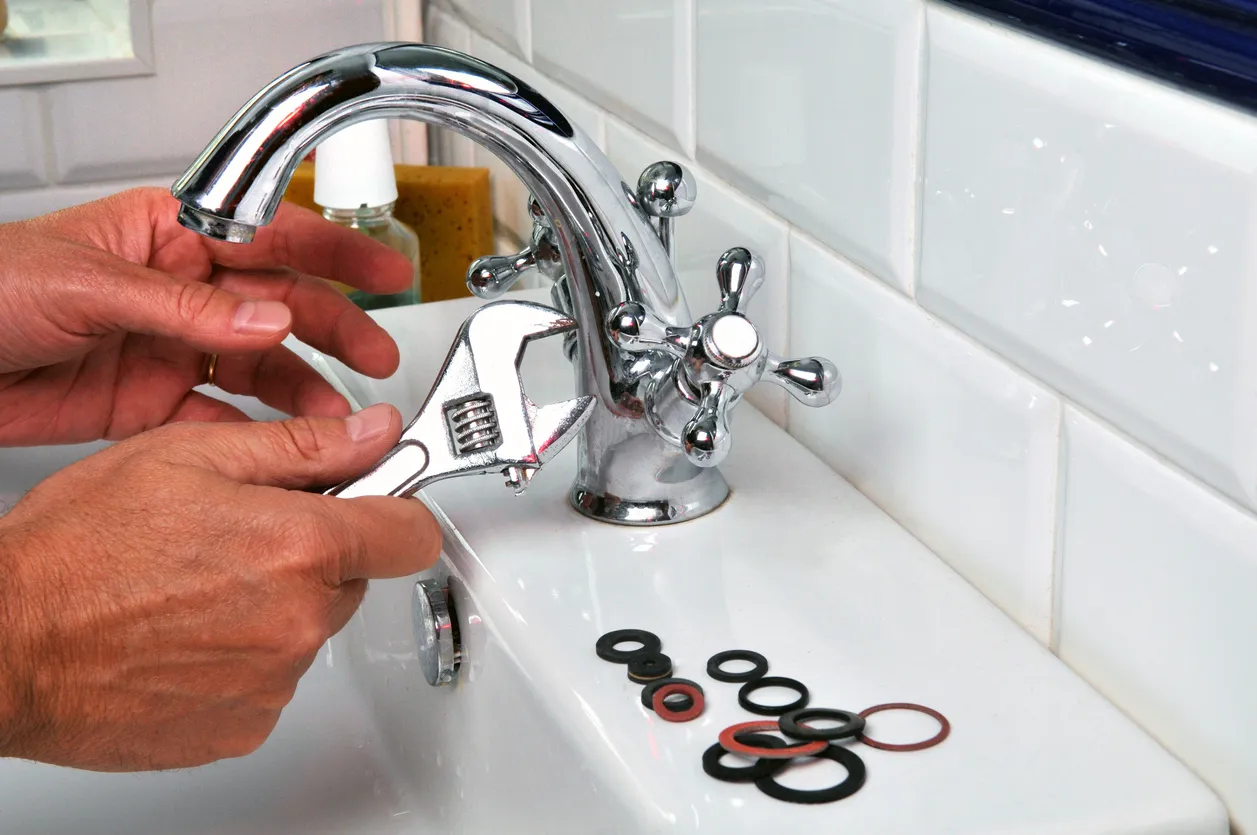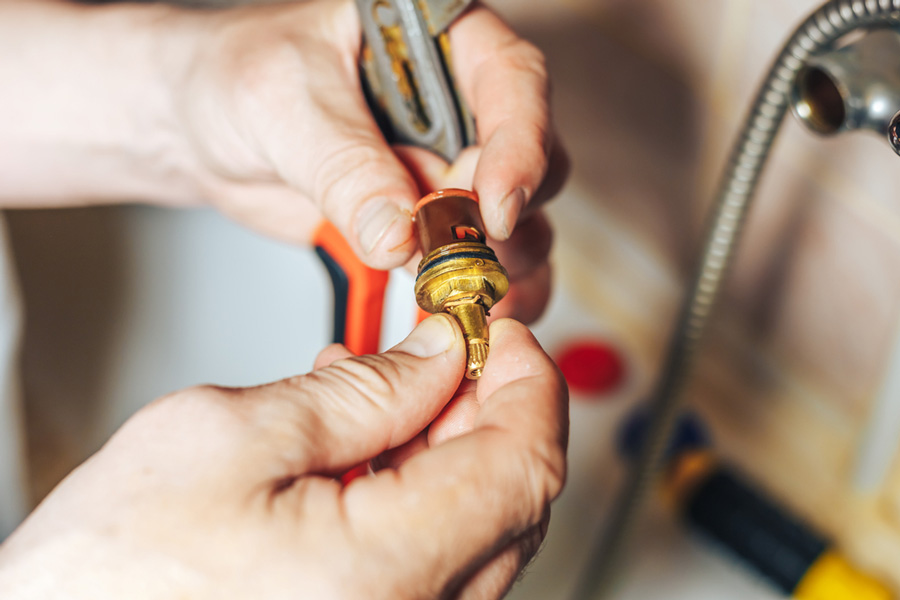Uncovering the Value of Fixing a Broken Faucet
Uncovering the Value of Fixing a Broken Faucet
Blog Article
What're your opinions regarding Why Are My Faucets Dripping (And Can I Fix It Myself)??

Leaking faucets could seem like a small aggravation, but their effect surpasses just the aggravation of the sound. From wasting water to incurring unneeded economic prices and health threats, ignoring a dripping faucet can result in different repercussions. In this post, we'll delve into why it's essential to address this typical home problem quickly and efficiently.
Wastefulness of Water
Ecological Effect
Leaking faucets contribute significantly to water wastefulness. According to the Environmental Protection Agency (EPA), a solitary tap leaking at one drip per second can waste greater than 3,000 gallons of water annually. This not only stress water sources yet likewise affects ecosystems and wild animals based on them.
Financial Costs
Raised Water Expenses
Beyond the ecological impact, dripping taps can inflate water costs significantly. The accumulated waste over time equates right into higher energy expenses, which might have been stayed clear of with timely repair services.
Prospective Residential Property Damages
Furthermore, extended trickling can lead to damage to components and surface areas bordering the faucet. Water accumulation can trigger discoloration, deterioration, and also architectural problems if left unattended, causing additional repair service prices.
Health Problems
Mold and Mildew Development
The consistent presence of wetness from a leaking tap creates an optimal environment for mold and mildew growth. These fungis not just jeopardize indoor air quality but also pose health risks, particularly for people with respiratory conditions or allergic reactions.
Waterborne Diseases
Stagnant water in trickling taps can become a breeding place for microorganisms and various other pathogens, boosting the danger of waterborne illness. Contaminants such as Legionella bacteria flourish in stagnant water, possibly causing major illnesses when consumed or inhaled.
DIY vs. Specialist Repair
Benefits and drawbacks of Do It Yourself Repair
While some might try to fix a leaking faucet themselves, do it yourself repair services include their own set of difficulties. Without correct expertise and tools, DIY efforts can aggravate the issue or result in incomplete repair services, extending the issue.
Advantages of Employing an Expert Plumber
Employing an expert plumber makes sure that the underlying root cause of the leaking faucet is dealt with efficiently. Plumbing technicians possess the competence and devices to diagnose and fix tap issues efficiently, conserving time and lessening the risk of additional damages.
Step-by-Step Overview to Repairing a Dripping Tap
Tools Required
Prior to attempting to deal with a leaking tap, gather the necessary devices, including a flexible wrench, screwdrivers, replacement components (such as washers or cartridges), and plumber's tape.
Usual Faucet Issues and Their Solutions
Determine the type of faucet and the certain issue creating the drip. Usual issues include worn-out washers, corroded shutoff seats, or malfunctioning O-rings. Refer to manufacturer guidelines or online tutorials for detailed guidance on repairs.
Safety nets
Routine Maintenance Tips
To stop leaking taps, do regular upkeep such as cleaning aerators, evaluating for leaks, and changing worn-out components promptly. In addition, consider mounting water-saving devices or upgrading to a lot more reliable fixtures.
Value of Prompt Services
Dealing with leaking faucets as quickly as they're seen prevents additional water wastage and prospective damage, eventually conserving both water and cash over time.
Effect On Home Value
Understanding of Well-Maintained Property
Keeping a residential or commercial property in good condition, including addressing maintenance problems like trickling faucets, boosts its perceived value and worth among prospective buyers or occupants.
Influence on Resale Value
Residences with properly maintained plumbing fixtures, consisting of taps, command higher resale values in the realty market. Resolving trickling faucets can contribute to a positive perception throughout building inspections and negotiations.
Environmental Obligation
Private Contribution to Conservation
Taking obligation for taking care of leaking faucets lines up with broader efforts toward water conservation and environmental sustainability. Every person's activities jointly make a considerable effect on preserving precious resources.
Lasting Living Practices
By prioritizing prompt repairs and taking on water-saving routines, individuals add to sustainable living methods that profit both present and future generations.
Final thought
Dealing with a leaking tap surpasses plain ease; it's a vital action toward preserving water, lowering economic prices, and securing health and wellness and residential property. Whether via do it yourself fixings or specialist help, acting to take care of leaking faucets is a small yet impactful means to promote accountable stewardship of sources and add to a healthier, more lasting future.
How to Fix a Leaky Faucet: Step-by-Step Repair Guide
A leaky faucet may seem like a simple annoyance, but if it's not fixed promptly, that leak could cost hundreds to potentially thousands. From water damage to mold, mildew, and high water bills, even a tiny leak can be catastrophic if left unattended. Damage like this can even affect the overall value of your home, so it's important to take the right approach for leaky faucet repair. You may need the help of a plumber in some cases, but we've got a few tips you can try on how to fix a leaky faucet before calling the pros.
Four Faucet Types
When you're learning how to fix a leaky faucet, the first step is knowing what kind of faucet you're working with! There are four common types.
Cartridge Faucets
Cartridge faucets come in one- or two-handled varieties. In one-handled cartridge faucets, hot and cold water combines in a single cartridge. In the two-handled versions, hot and cold water are controlled separately and mixed in the faucet.
Ball Faucets
Ball faucets have a single lever you push up and down to adjust the pressure and rotate to change the temperature. A slotted metal ball controls the amount of water allowed into the spout.
Compression Washer Faucets
They're the oldest type of faucet, but they're still used in many homes — especially older ones. Compression faucets have two separate handles that, when turned, raise or lower the washer that seals a water valve. This valve stops water from flowing through the faucet when it is turned off.
Disc Faucets
Disc faucets rarely need to be repaired due to their maintenance-free design. The water flow is controlled by two discs — the upper one raises and lowers against a fixed lower disc, creating a watertight seal. If your disc faucet starts leaking, you may need to replace the seals or clean residue buildup from the inlets.
Fixing a Leaky Faucet
Step 1: Turn Off the Water
Whether you're learning how to fix a leaky bathtub faucet or how to fix a leaky kitchen faucet, always turn off the water supply to your working area when you're fixing a leak. The last thing you want is a flood added to your list of things to fix.
Look for the shutoff valves below your sink or around the tub and turn them clockwise to stop the water flow. If your faucet doesn't have shutoff valves, you may need to turn off the water for the whole house. Check to make sure it's off by turning the faucet on. If nothing comes out, you're ready to start the repair.
Step 2: Take Apart the Faucet
How you disassemble your faucet depends on the type of fixture you have. You can use a flathead screwdriver to remove the caps on top of the handle or handles for cartridge and compression faucets. Inside, you should see handle screws. Unscrew these with a screwdriver to remove the handle.
Disc- and ball-style faucets will typically have an inlet screw near the handle, and removing that will reveal the interior of the faucet.
Detach the Valve Stem
For cartridge- and compression-style faucets, you'll see the inner valve stem or cartridge once you remove the faucet handles. If you have a compression faucet, unscrew the brass valve stem. If you have a cartridge faucet, pull out the cartridge. If your cartridge has been in place for a while, it may require some tools or extra force to remove it due to mineral deposits.
Examine and Replace Parts
Once you've removed the parts, check them out to confirm what needs to be replaced. You may see corroded rubber washers, O-rings, stems, or cartridges. On a ball-style faucet, check the seats and springs for damage.
If you need to repair a leaky disc faucet, check the inlet and seals on the lower disc.
Once you determine what parts must be replaced, visit your local hardware store. Bring the damaged parts with you to ensure you can purchase the correct components to replace them.
Clean Valves and Faucet Cavity
If you've removed a stem or cartridge, you may notice mineral buildup in the faucet's threads. Use white vinegar to clean the valve seat by soaking it for a few minutes, then scrub it away with a soft toothbrush and rinse with warm water. You can also clean the interior of the faucet in the same way.
Reassemble the Faucet
Once your faucet is cleaned and the required parts have been replaced, it's time to reassemble it. Put the pieces back together and slowly turn the water supply back on. Doing this slowly is crucial because too much initial water pressure can damage the new hardware you've just installed.
https://homewarranty.firstam.com/blog/how-to-fix-leaky-faucet

I'm very focused on How to Fix a Dripping or Leaky Faucet and I'm hoping you liked the entire piece. Are you aware of anybody else who is curious about the subject? Feel free to promote it. We value reading our article about How to Fix a Dripping or Leaky Faucet .
Report this page